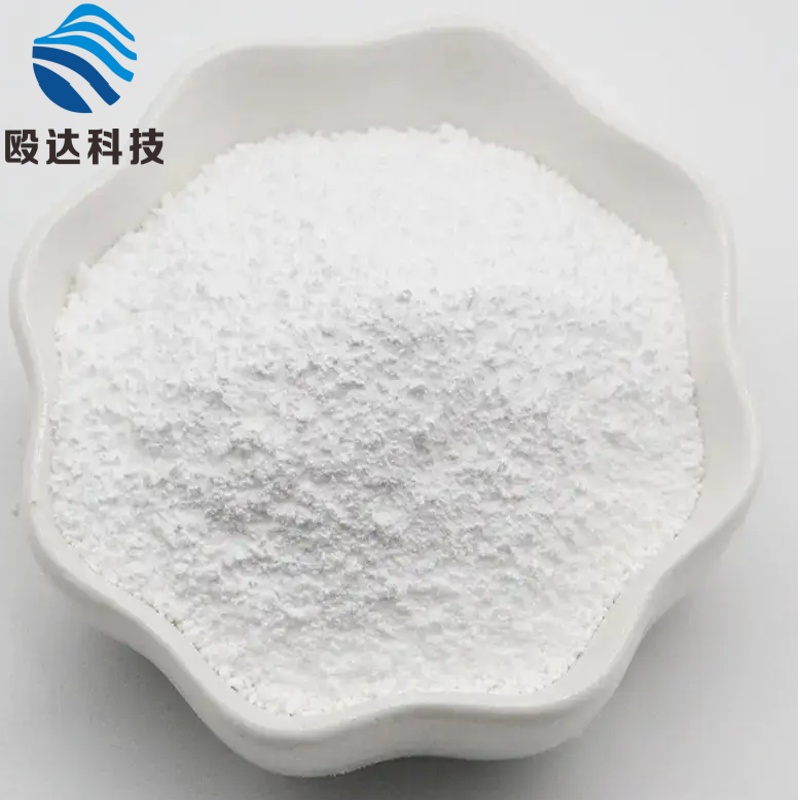Research on safety test project of hydrogen fuel cell stack
-
Last Update: 2009-09-15
-
Source: Internet
-
Author: User
Search more information of high quality chemicals, good prices and reliable suppliers, visit
www.echemi.com
China is working hard to develop all kinds of fuel cells to save energy and improve exhaust emissions How to solve the safety of hydrogen fuel cell has become an urgent research topic for researchers At present, the global oil shortage, a variety of clean energy vehicles have been widely developed, such as pure electric vehicles, hybrid vehicles, gas vehicles and so on At the same time, there are various vehicles powered by hydrogen fuel cells However, the safety of hydrogen fuel cell stacks has gradually become one of the key factors hindering the development of fuel cell vehicles Therefore, the safety test project of hydrogen fuel cell stack will be studied 1 Principle of hydrogen fuel cell: hydrogen fuel cell uses hydrogen and oxygen (air) as reaction gas, uses proton exchange membrane technology to realize hydrogen oxidation and oxygen reduction, so as to generate voltage and reaction generated water 1.1 at one end of the battery, hydrogen reaches the anode through the gas guide plate Under the action of catalyst, the following anode reaction occurs: in the reaction product, hydrogen ions (protons) pass through the solid electrolyte film between the anode and the cathode to reach the cathode, and electrons also reach the cathode through the external circuit 1.2 at the other end of the battery, oxygen reaches the cathode through the gas guide plate, and under the action of catalyst, cathode reaction occurs 1.3 the total chemical reaction reflects the continuous delivery of hydrogen and oxygen to the battery, and the electrons will continuously move in the external circuit to form a current, so as to output electric energy to the load 2 Safety analysis of vehicle hydrogen fuel cell stack is shown in Figure 2 1 and 3 are end plates, 2 and 6 are sealing gaskets, 3 and 5 are current collecting plates, and 4 are proton exchange membrane components This figure is a single-chip stack The actual car stacks are dozens or hundreds of stacks The main factors that affect the safety of hydrogen fuel cell stacks are as follows: 2.1 electrical safety: the output voltage Zui of a single stack can be as high as 150V, and the voltage of multiple stacks in series is higher Such a high output voltage poses a threat to the safety of passengers in the vehicle, which requires the insulation strength and dielectric strength of the stack In this respect, the safety of the stack has something in common with the safety of the electric vehicle and the hybrid electric vehicle battery, such as the requirements for the insulation level, dielectric strength, high voltage protection, etc 2.2 hydrogen safety: a large amount of hydrogen shall be introduced into the hydrogen fuel cell stack when it is working As we all know, hydrogen is a combustible and explosive gas with a wide range of explosion concentration limits, as shown in Table 1 Table 1 explosion volume tolerance of all kinds of vehicle gas / liquid it can be seen from table 1 that hydrogen explosion volume tolerance from 13-59% is likely to explode Then, it is necessary to analyze under what circumstances hydrogen will leak and under what circumstances it may detonate hydrogen after leakage It is necessary to consider the electric safety and hydrogen safety of the reactor 2.3 comprehensive analysis of hydrogen explosion factors of electric reactor 2.3.1 possible hydrogen leakage links: for the electric reactor itself, there are two main hydrogen leakage points, * is the hydrogen supply interface, and the other is the stack gap of multiple electric reactors When the reactor is impacted by external machinery, its own mechanical mechanism will change, causing damage to the original sealing structure, resulting in hydrogen leakage In addition to the leakage caused by the failure of the hydrogen supply system, the instability caused by the high hydrogen supply pressure should also be considered 2.3.2 links that may detonate hydrogen: in case of collision, the collision friction between the stack itself or the metal parts of the vehicle body may generate sparks, which may detonate the leaked hydrogen In addition, when the mechanical structure of the stack is deformed due to the application of external force, the short circuit between the poles is caused; because some sharp metal objects are punctured into the stack, the short circuit between the poles is caused The direct consequence of the short circuit between the poles is the generation of electric sparks and the detonation of hydrogen Based on the analysis of safety factors of hydrogen fuel cell stack, it is considered that many risk assessment methods and test items of the stack can refer to the existing standards of vehicle energy storage devices and gas vehicles From these standards, it can be used for the safety test project of hydrogen fuel cell stack In combination with the characteristics of hydrogen fuel cell itself, the safety test project and basic test methods of hydrogen fuel cell stack can be preliminarily formulated 3 Test items of domestic vehicle energy storage device At present, the standards of vehicle energy storage device for electric vehicles and hybrid electric vehicles issued in China mainly include: GB / T 18384.1-2001 safety requirements for electric vehicles Part 1: vehicle energy storage device; GB / T 18332.2-2001 metal hydride nickel battery for electric road vehicles; GB / Z 18333.1-2001 lithium ion batteries for electric road vehicles In the above standards, the test items related to hydrogen fuel cell in battery for electric vehicle mainly include the following aspects: insulation resistance, dielectric strength, short circuit between poles, vibration resistance, impact resistance to high temperature, high humidity resistance to extrusion, puncture resistance to immersion 4 Safety test items of domestic gas vehicles At present, the safety standards of gas vehicles issued in China mainly include: GB 18047-2000 compressed natural gas for vehicles, GB 17258-1998 compressed natural gas cylinders for vehicles, GB 19159-2003 liquefied petroleum gas for vehicles, GB 17259-1998 liquefied petroleum gas cylinders for vehicles In the above standards, the test items related to the safety of hydrogen fuel cell stack are mainly the pressure resistance test of gas circuit and water circuit 5 Safety test items of hydrogen fuel cell stack According to the actual working environment and state of the vehicle hydrogen fuel cell stack when the vehicle is running / parked, considering various accidents of the hydrogen fuel cell vehicle, referring to the current standards and test items of the vehicle energy storage device and the gas vehicle, and aiming at the special principle structure of the vehicle hydrogen fuel cell stack, the safety test items of the stack are analyzed and studied After analysis and research, the safety test items and basic methods of hydrogen fuel cell stack mainly include the following aspects: 5.1 electrical safety characteristics insulation resistance: 1000V AC voltage (50Hz or 60Hz) or 1600 through insulation resistance tester The DC voltage of V is connected to the electrode of the stack and the metal and non-metal parts of the shell, and the insulation resistance value is monitored under different temperature and humidity environment Dielectric strength: connect 1000 V AC voltage (50 Hz or 60 Hz) or 1600 V DC voltage to the electrode of the stack and the metal and non-metal parts of the shell through the dielectric strength tester for 1 min, and monitor the current value under different temperature and humidity environment Pole to pole short circuit: connect the two ends of the contact of the large current contactor to the positive and negative electrodes of the stack output respectively, and monitor the changes of the stack output voltage, current, single-chip voltage, temperature and other important parameters during the contact cycle of the contactor 5.2 environmental resistance high temperature and damp heat: work in a certain temperature and humidity environment, observe the working state of the stack, high temperature resistance characteristics of mechanical components and condensation Vibration and shock: test the anti vibration / Shock ability of the stack XYZ in three directions through the vibration / shock test bench, and observe the looseness and cracking of the mechanical structure of the stack Drop: drop the stack freely from 1.5m height to the hard wood floor, observe the damage of the shell, and then carry out other tests such as insulation resistance, dielectric strength and withstand voltage Immersion: immerse the stack in water or a certain concentration of salt water for a period of time, and observe the corrosion / corrosion of the shell Conduct other tests after immersion 5.3 mechanical strength extrusion and puncture: the relevant mechanical strength of the stack shall be assessed through the extrusion / puncture test bench It can be divided into three directions During the test, the output voltage, current, single-chip voltage, temperature and other important parameters of the stack are monitored in real time Withstand voltage: the withstand voltage of the gas and water circuits of the electric reactor is tested by the withstand voltage test bench, which can be tested by 3 to 5 times of Zui's large working pressure, including withstand voltage test and pressure maintaining test 6 Conclusion 6.1 the electric pile used in hydrogen fuel cell vehicles can output electric power and drive the motor to work, which makes the vehicle move forward It has the electrical characteristics of the power battery used in pure electric vehicles and hybrid electric vehicles Therefore, many safety test items can refer to the relevant standards of the energy storage system for electric vehicles 6.2 the work of the hydrogen fuel cell stack depends on the peripheral hydrogen, oxygen supply system and flow control system, air humidification system, cooling water circulation system, and also involves the combustible gas H2, so the relevant test items of the gas vehicle can also be applied to the safety test of the hydrogen fuel cell stack 6.3 because there is no relevant standard for hydrogen fuel cell stacks at home and abroad, the specific parameters in the test items described in this paper, such as test time, temperature, pressure, etc., need to carry out the corresponding safety test for the stacks, with the accumulation of data to determine these parameters 6.4 in order to simulate to a large extent the real working state of Zui stack when the whole vehicle is actually running / parking, during the safety test, if conditions permit, try to keep the stack in working state Therefore, the influence of different working states on the safety test data still needs a lot of experimental research 6.5 the work of the reactor needs the support of peripheral hydrogen, oxygen / air, cooling water and other equipment These devices have their own or overall control system The safety protection function of the control system greatly reduces the risk of hydrogen leakage and short circuit between the electrodes of the reactor Therefore, in the future, it is necessary to consider the safety test and evaluation of the hydrogen fuel cell system in combination with the peripheral supply system and the reactor itself - reprint
This article is an English version of an article which is originally in the Chinese language on echemi.com and is provided for information purposes only.
This website makes no representation or warranty of any kind, either expressed or implied, as to the accuracy, completeness ownership or reliability of
the article or any translations thereof. If you have any concerns or complaints relating to the article, please send an email, providing a detailed
description of the concern or complaint, to
service@echemi.com. A staff member will contact you within 5 working days. Once verified, infringing content
will be removed immediately.







